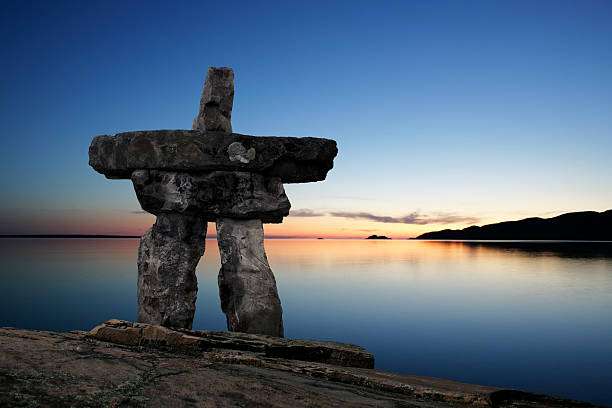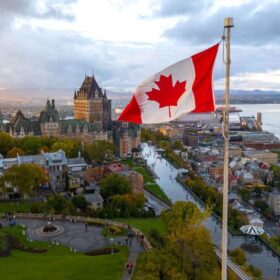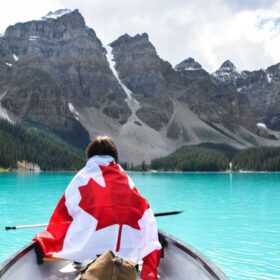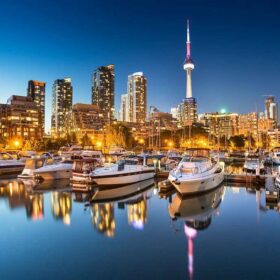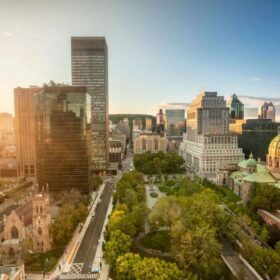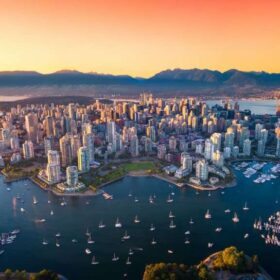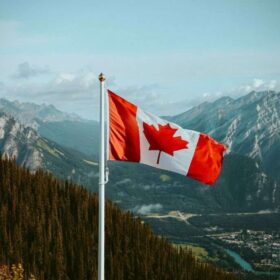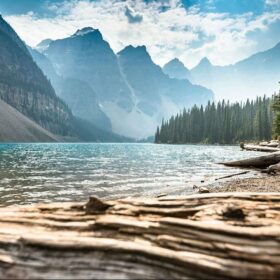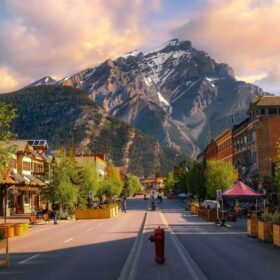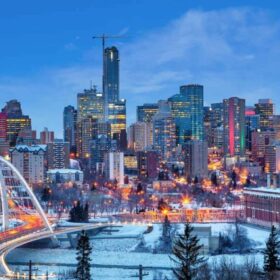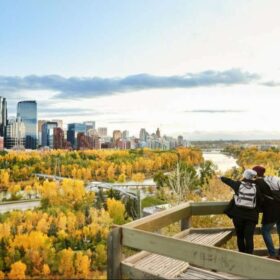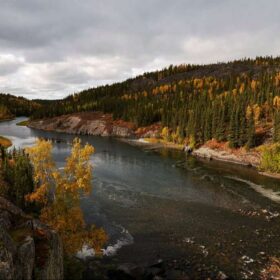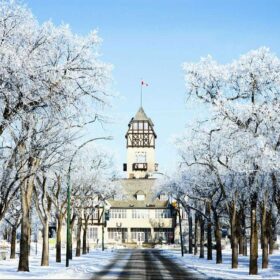Established officially in 1999, Nunavut Territory in Canada serves as an administrative unit, once forming part of the former Northwest Territories. Spanning an expansive area, Nunavut encompasses the entire eastern segment of northern Canada, offering a rich exploration of attractions, history, culture, nature, and the best places to visit in Canada’s Far North.
Covering 1.9 million square kilometers, Nunavut is nearly eight times the size of the United Kingdom and constitutes roughly one-fifth of Canada’s total land area. Its southern boundary aligns with the 60th parallel, while the northern expanse extends to within about 800 kilometers of the North Pole. Predominantly located above the tree line, the territory features treeless tundra adorned with dwarf shrubs, grasses, mosses, and lichens, while fjords carve deep inland from the coast.
Nunavut has witnessed remarkable success in craft- and handicraft-based industries, producing coveted leather goods, jewelry, and ivory work in small workshops. These unique creations not only cater to the modest influx of tourists in the Far North but also contribute to a vibrant “export trade” to major tourist hubs in the Canadian South, such as Québec, Toronto, and Vancouver.
For inspiration and insights into planning your northern Canadian adventure, consult our comprehensive list of the top tourist attractions in Nunavut, Canada.
1. Sirmilik National Park
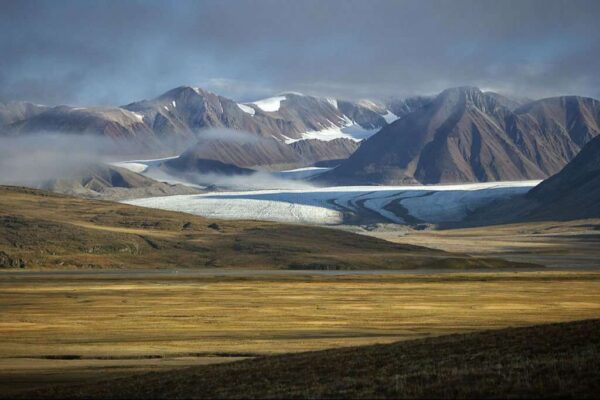
Sirmilik National Park is characterized by soaring mountains, rugged glaciers, and a diverse array of wildlife. Situated in one of Canada’s most remote and northern regions, the park spans Bylot Island, Oliver Sound, and the Borden Peninsula.
The landscape features stunning mountains, glaciers, ice fields, and coastal lowlands. While some visitors are drawn to the park for boating and kayaking excursions, it’s crucial to be aware that the coast is typically ice-covered until mid-July. Travel to the park is not feasible during ice break-up and freeze-up periods.
2. Baffin Island
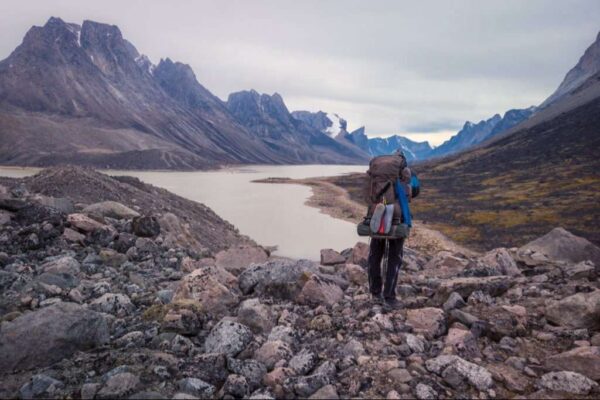
Baffin Island, with its awe-inspiring landscape, the warm hospitality of the Indigenous Inuit people, and numerous opportunities for a distinctive holiday experience, attracts tourists seeking a remote and nature-inspired adventure. Despite its appeal, the island does not experience an influx of visitors, making it ideal for those who appreciate extremely isolated travel experiences.
As the fifth-largest island globally, Baffin Island boasts diverse coastlines and landscapes. The eastern coast, reminiscent of Norway with steep fjords and small offshore islands, stands out as one of the best areas to explore. This region features a long, narrow alpine-like mountainous zone, with Auyuittuq National Park on the Cumberland Peninsula reaching heights of 2,591 meters.
Iqaluit on Frobisher Bay serves as the main administrative town, and the only means of reaching this far-north island is by air, albeit at a relatively high cost. The region has a high cost of living, an inhospitable climate, and summer brings swarms of insects. Nonetheless, for travel specialists seeking a unique and unforgettable Canadian vacation adventure, Baffin Island remains a compelling destination.
3. Qaummaarviit Territorial Park
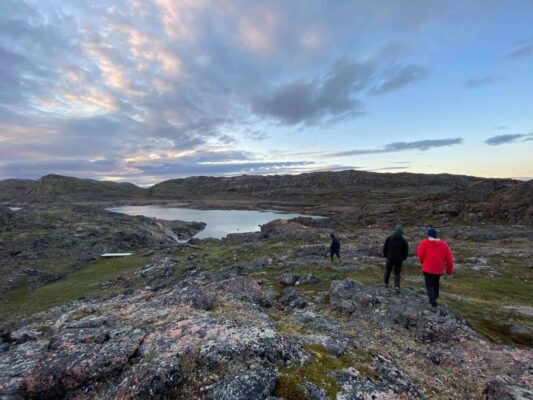
Qaummaarviit Territorial Park, once the dwelling place of the Thule People and recognized as the “place that shines,” is a rugged destination situated on an island. Accessible by ski, dogsled, or snowmobile in the winter months, and by boat during the open-water season, visitors can explore the remnants of ancient Thule sod houses and artifacts dating back over 750 years.
The site also holds numerous features indicating evidence of Inuit settlement and culture dating as far back as the 1600s. (Editor’s Note: Camping is not permitted, so plan to visit as part of a day trip to the island.)
4. Iqaluit
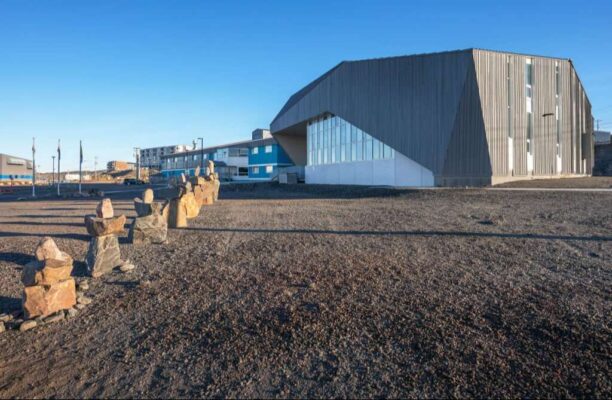
For many years, Iqaluit, situated at the end of Frobisher Bay, attracted whalers, scientists, traders, and missionaries. It was renowned as the gateway to Baffin Island, and the Inuit name Iqaluit translates to “many fish.”
However, it wasn’t until 1942, when the area was developed as a U.S. military airfield, that the community began to expand. Now serving as the service and administrative center of the Baffin Region, Iqaluit is a modern town equipped with a comprehensive infrastructure. It houses the Nunavut Legislative Assembly, as well as amenities such as hotels, schools, a hospital, and a cathedral. Additionally, there’s a weather and radio station, along with a camping site.
The Unikkaarvik Visitor Centre in Iqaluit is a modern facility providing valuable information about this remarkable community. Another worthwhile visit is the Nunatta Sunakkutaangit Museum, located in a former Hudson’s Bay Company building, dedicated to preserving local Inuit art and culture.
5. Naujaat (Repulse Bay)
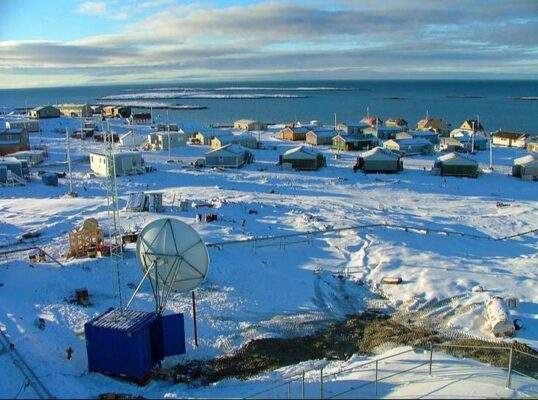
Accessible solely by air travel, Naujaat, previously named Repulse Bay until 2015 when it reverted to its indigenous name, thrives on tourism. The primary attraction? Travelers seek land and sea adventures guided by Inuit tour guides.
The European chapter of this region’s Canadian history began in 1741 when Captain Henry Middleton sailed into the deep bay, known to the Inuit as “Naujaat” (gulls’ nesting place), in pursuit of the Northwest Passage. Failing to discover the Arctic route, Middleton, in his disappointment, named the location Repulse Bay.
6. Ellesmere Island
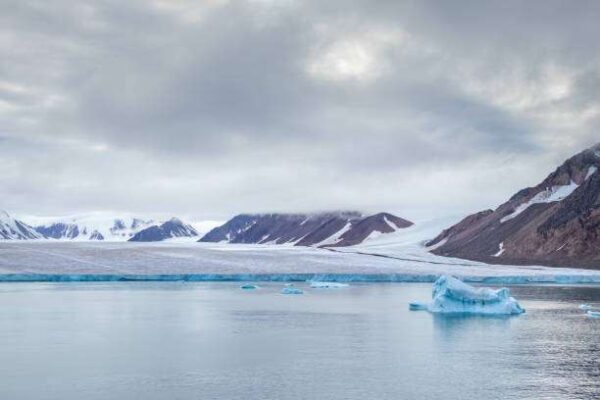
Ellesmere Island is situated in the far north of Canada and stands as the second largest island, following Baffin Island, in the Canadian archipelago. It was from Cape Columbia on Ellesmere that American explorer Robert Peary embarked on his 1909 journey to trek to the North Pole.
In the northernmost part of the island, Quttinirpaaq National Park unfolds. This strikingly mountainous and glaciated area is home to several hiking trails well-known to dedicated backpackers and adventure enthusiasts. Abundant wildlife awaits observation, with tourists frequently sharing images of seals and walruses, musk ox, wolves, arctic hares, and, at a safe distance, polar bears.
Grise Fiord, positioned at the southern tip of Ellesmere Island, is a very modest community boasting favorable hunting conditions and an exquisite Arctic panorama, accessible through canoe or snowmobile tours.
7. Belcher Islands
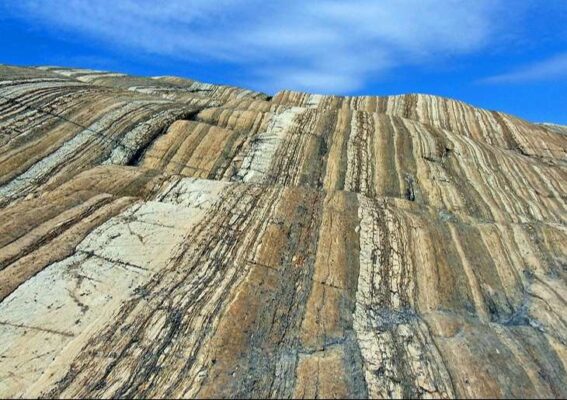
Located off the coast of Hudson Bay, the desolate Belcher Islands, also recognized as a prospective tourist spot in Nunavut, are referred to by the Inuit as Sanikiluaq. These islands provide a habitat for polar bears and feature a wealth of marine life, including beluga whales and walruses in the adjacent waters.
Despite being a destination for adventurous kayakers, the Belcher Islands remain exceptionally secluded, attracting only a handful of visitors annually. Sanikiluaq is equipped with an airstrip servicing the area, although the majority of visitors arrive by boat.
8. Pond Inlet
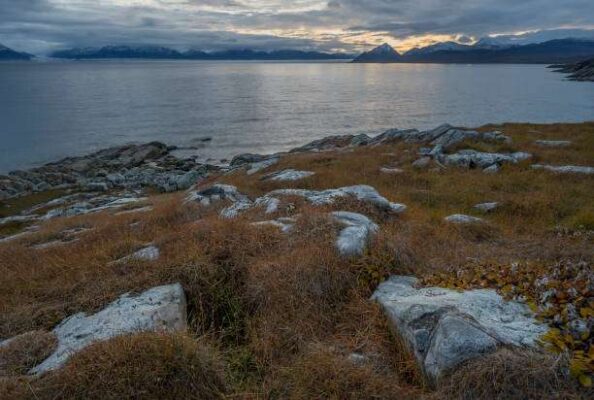
Situated along the Baffin Island coast, Pond Inlet—known as Mittimatalik in Inuit—is an Inuit village located west of a challenging, mountainous landscape. Despite being renowned for its natural beauty and culture, the area is exceptionally remote, leading to high access costs.
Among the key tourist attractions in the community is the Nattinnak Centre. Functioning as both a museum and a visitor center, this facility showcases captivating exhibits on the history, geography, and wildlife of the region.
9. Auyuittuq National Park
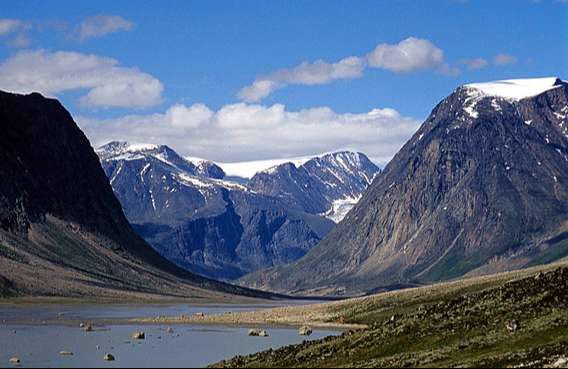
Auyuittuq National Park, situated on the Cumberland Peninsula in the southeast of Baffin Island, translates to the “land where it never thaws.” The park encompasses the Penny Ice Cap, a remnant from the Ice Age glaciations, covering a significant portion of its expanse.
The terrain is marked by expansive valleys and rugged mountains, featuring vertical walls that soar up to 1,200 meters in height. Notably, Mount Asgard stands out as an impressive landmark. Pangnirtung Pass serves as the primary route through the park, culminating at the Pangnirtung Fiord.
For avid adventurers seeking extremes, the park is renowned for its hiking opportunities. Among these, Mount Thor offers a particularly thrilling experience, with a peak reaching 1,675 meters and gaining recognition for rock climbing. It’s important to note that those contemplating such adventures must register with Parks Canada (refer to the website below for details).
10. Quttinirpaaq National Park
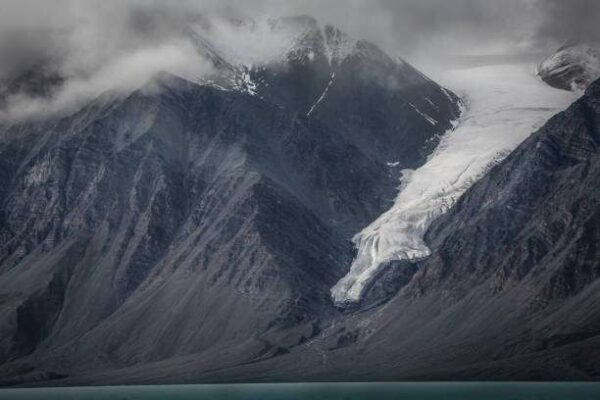
Situated in the far north of Ellesmere Island is Quttinirpaaq National Park. This highly mountainous and glaciated region appeals to adventurous hikers due to its remoteness and a variety of hiking trails well-known to dedicated backpackers.
In this primarily arid Arctic climate, certain areas experience (relatively) warmer and moister temperatures, fostering the growth of plants and sustaining wildlife. The vicinity around Lake Hazen, for instance, hosts a diverse range of inhabitants, including muskoxen, Peary caribou, arctic foxes, wolves, lemmings, and over 30 bird species. Most journeys to Quttinirpaaq typically commence in Resolute Bay.
Accommodation: Where to Stay in Nunavut: Best Areas & Hotels
FAQs
Q: When is the best time to witness the Northern Lights in Nunavut?
A: The optimal time is during the winter months, particularly from late November to early March.
Q: Are there any restrictions on wildlife encounters in Nunavut?
A: While observing wildlife is encouraged, it’s crucial to respect their natural habitat and adhere to guidelines set by park authorities.
Q: What traditional dishes should I try in Nunavut?
A: Sample local delicacies like seal, caribou, and Arctic char for an authentic Inuit culinary experience.
Q: How do I contribute to sustainable tourism in Nunavut?
A: Choose eco-friendly accommodations, minimize waste, and support local businesses to contribute to the region’s sustainability efforts.
Q: Can I visit Nunavut without participating in adventure activities?
A: Absolutely! Nunavut offers a range of experiences, and you can enjoy the cultural aspects, wildlife watching, and stunning landscapes without extreme adventures.

